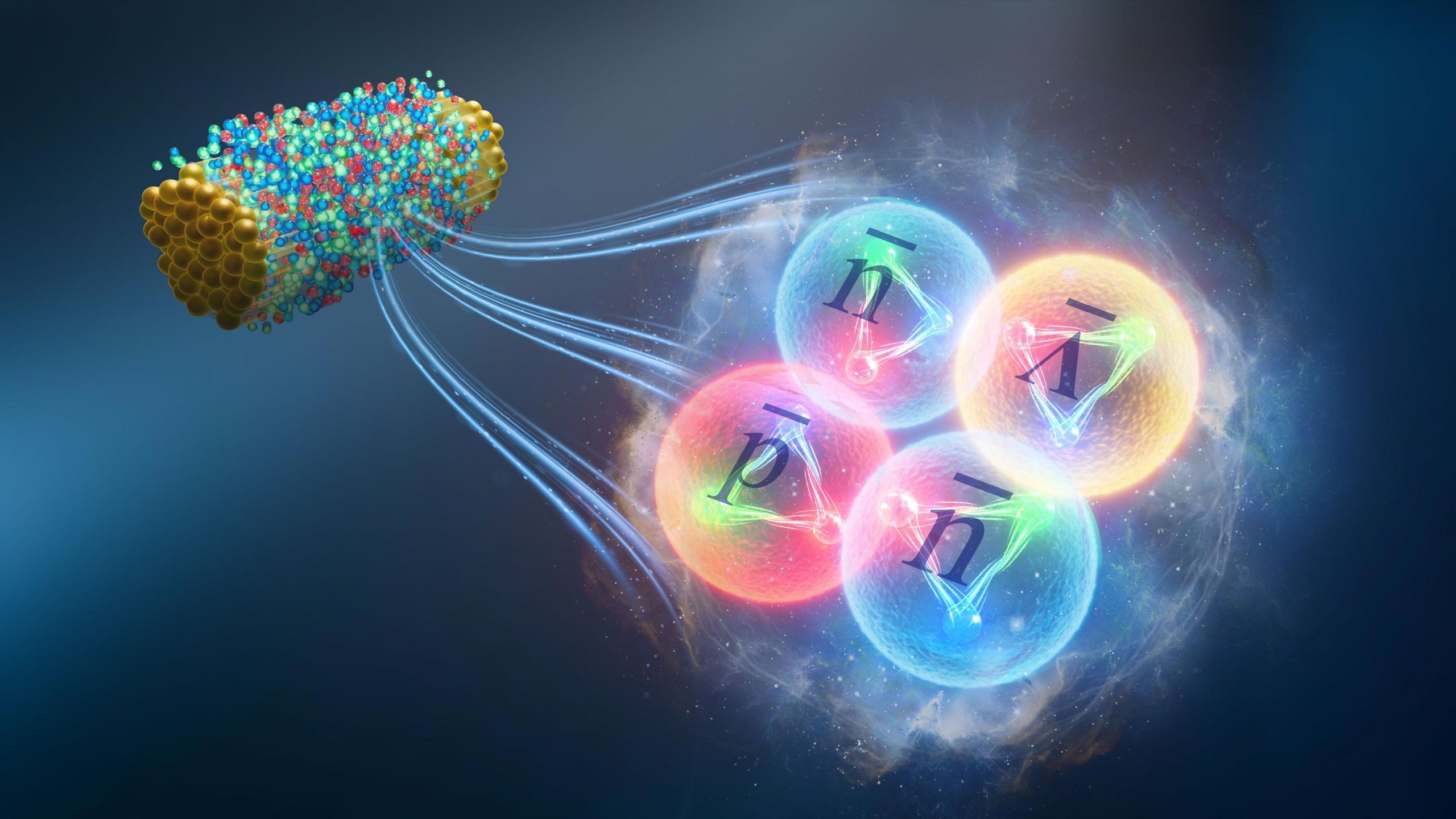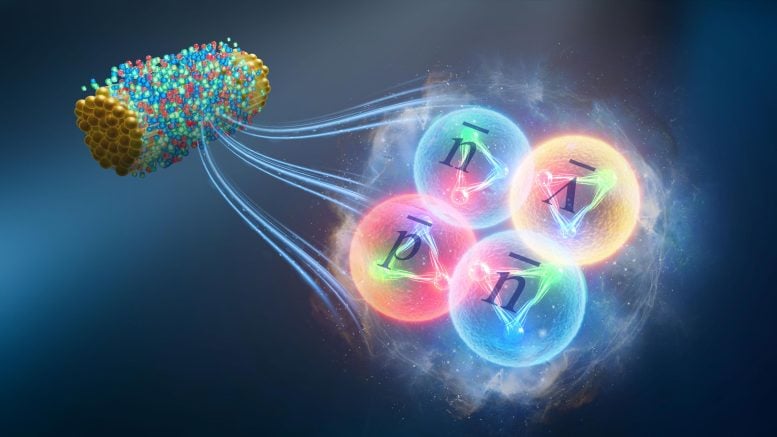

Researchers from the STAR Collaboration have discovered a new antimatter hypernucleus, antihyperhydrogen-4, at the Relativistic Heavy Ion Collider, marking the heaviest antimatter nucleus found to date.
This milestone contributes to our understanding of the universe’s matter-antimatter asymmetry, investigating why antimatter is so scarce today compared to matter.
Groundbreaking Discovery in Antimatter Research
For the first time, physicists from the STAR Collaboration have observed antihyperhydrogen-4, a new antimatter hypernucleus. To date, this is the heaviest antimatter hypernucleus discovered in experiments. This study, led by researchers from the Institute of Modern Physics (IMP) of the Chinese Academy of Sciences, was published on August 21 in the journal Nature.
Current physics assumes that the properties of matter and antimatter are symmetrical and that equal amounts of matter and antimatter existed at the birth of the universe. However, some mysterious physical mechanism caused the annihilation of most matter and antimatter, with only about one in ten billion matter particles surviving. These particles formed the matter world we see today.
Exploring Antimatter’s Mysteries
“What caused the difference in quantities of matter and antimatter in the universe? To answer this question, an important approach is to create new antimatter in the laboratory and study its properties,” said Prof. Hao Qiu from IMP.
In today’s matter-dominated world, antimatter is extremely rare because it easily annihilates with surrounding matter. Antimatter nuclei and antimatter hypernuclei (nuclei containing hyperons such as Lambda) formed by combining several antibaryons are even more difficult to produce. Since the Dirac equation indicated the existence of antimatter in 1928, scientists have discovered only six types of antimatter (hyper)nuclei over nearly a century.
Antihyperhydrogen-4 Unveiled
The newly discovered antihyperhydrogen-4 was produced at the Relativistic Heavy Ion Collider (RHIC) in the United States. RHIC can accelerate heavy ion beams to nearly the speed of light and make them collide. These collisions simulate the conditions of the early universe in the laboratory, producing fireballs with temperatures of several trillion degrees, which contain approximately equal amounts of matter and antimatter. As the fireball rapidly expands and cools, some antimatter escapes annihilation with matter and is detected by the STAR detector.
Antihyperhydrogen-4 is composed of one antiproton, two antineutrons, and one anti-Lambda hyperon. Due to the presence of the unstable anti-Lambda hyperon, antihyperhydrogen-4 decays after traveling merely a few centimeters.
Implications of Antimatter Studies
“After analyzing experimental data of approximately 6.6 billion heavy-ion collision events, we reconstructed antihyperhydrogen-4 from its decay products antihelium-4 and π+ meson, and identified a signal of about 16 antihyperhydrogen-4,” said WU Junlin, a PhD student at IMP.
The researchers also measured the lifetime of antihyperhydrogen-4 and found no significant difference compared to that of its corresponding particle hyperhydrogen-4 within the limits of measurement precision, further verifying the symmetry between matter and antimatter properties.
The discovery and study of antihyperhydrogen-4 mark a significant advancement in the exploration of antimatter and the understanding of matter-antimatter symmetry.
For more on this discovery, see Atom Smasher Shatters Records With Heaviest Antimatter Discovery.
Reference: “Observation of the Antimatter Hypernucleus 4/(anti)Λ(anti)H” by STAR Collaboration, 21 August 2024, Nature.
DOI: 10.1038/s41586-024-07823-0